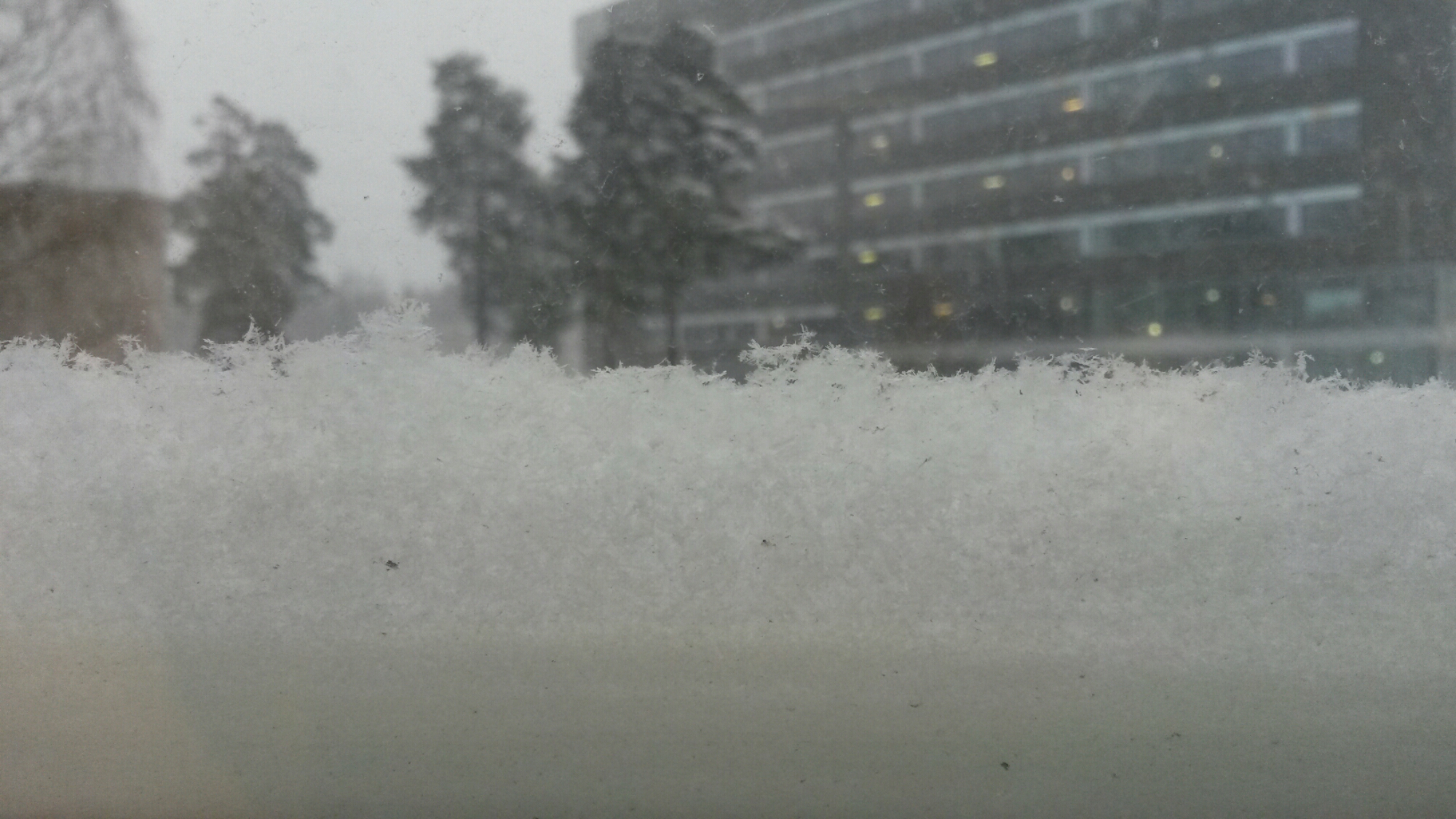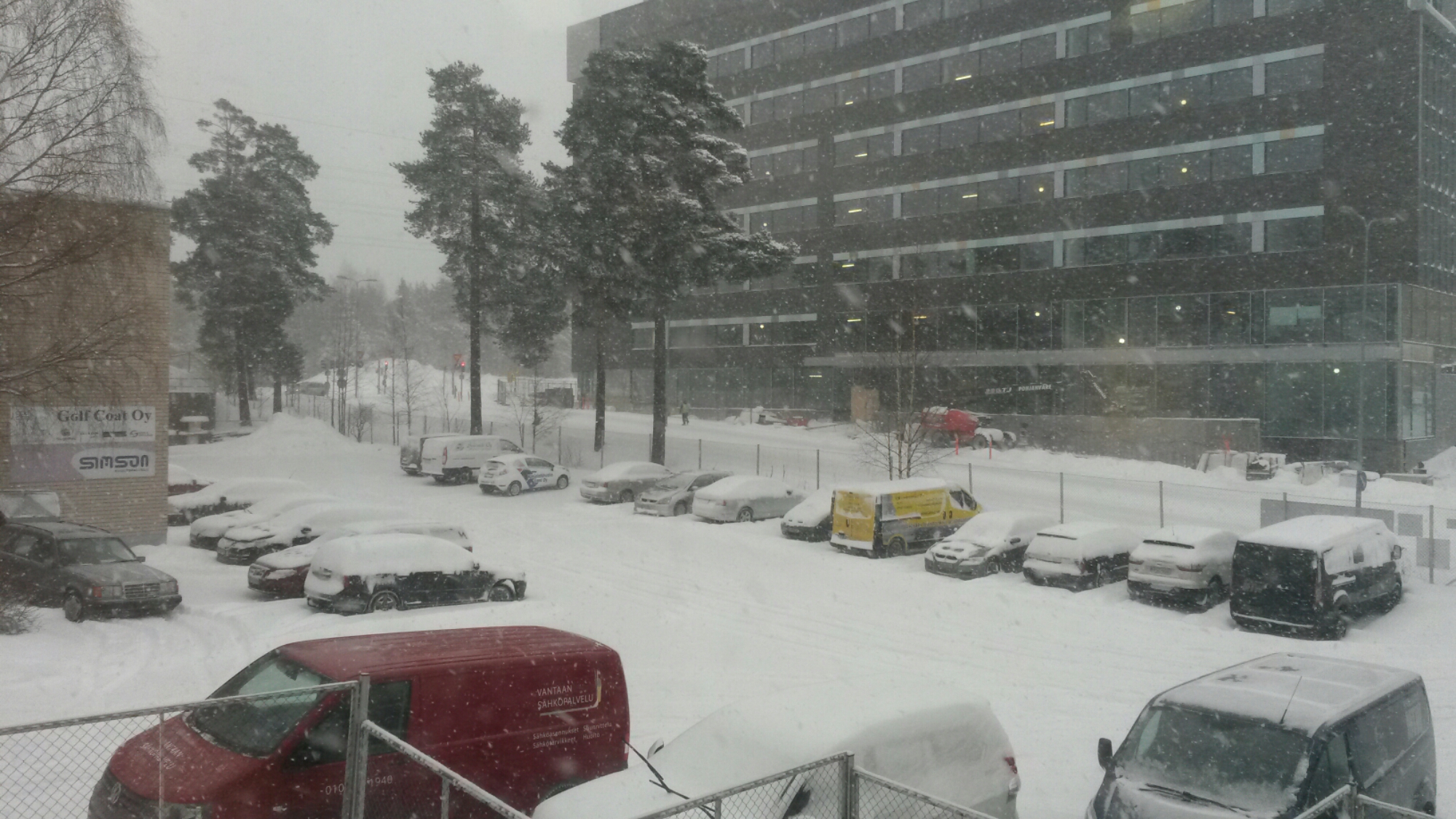Winter is really in Finland. It is -8 degrees celsius in Helsinki and snowing a lot (10 cm of snow in the morning). And life pretty much goes normally – people go to work, schools are open and people drive their cars at almost normal speed on the roads and highways, flights run normally, etc. Winter business as usual.
Posted from WordPress for Android




3 Comments
Tomi Engdahl says:
US blizzard to push a pulse of warm air to Finland
http://www.feedspot.com/?dadi=1#feed/f_3745789/article/2841828014?dd=43114854697088
The blizzard that delivered near-record snowfall and paralysed much of the United States East Coast last weekend will push a warm front to Finland by the end of the week, the Finnish Meteorological Institute (FMI) forecasts.
“The blizzard from the US East Coast will [reach] Finland on Thursday and bring with it a front of warm air,” the FMI forecasts.
can raise temperatures in Southern and Western Finland to as high as 3–4 degrees Celsius
Tomi Engdahl says:
On the snow theme some snow hacks:
Don’t Shovel Snow; Build an Epic Melt System!
http://hackaday.com/2016/01/24/dont-shovel-snow-build-an-epic-melt-system/
Automate Winter with a 3D Printed Snowblower
http://hackaday.com/2015/02/14/automate-winter-with-a-3d-printed-snowblower/
Tomi Engdahl says:
More winter hacks:
Conductive Concrete Melts Snow and Ice
http://hackaday.com/2016/01/27/conductive-concrete-melts-snow-and-ice/
Winter sucks. Ice sucks. Shoveling sucks. What if roads, or your driveway, could get rid of snow and ice by themselves? (…with the help of our friend, the electron.)
Electrified Concrete Is a Surprisingly Effective Way to De-Ice Roads
http://gizmodo.com/electrified-concrete-is-a-surprisingly-effective-way-to-1755066042
Traditional methods of de-icing roads involve pouring some kind of chemical onto the surface: effective, but also time-consuming, and expensive down the line. Pumping electricity through concrete isn’t the most intuitive solution, but it could be surprisingly effective.
Chris Tuan, a University of Nebraska engineering professor, has created his own special mix of conductive concrete, currently being trialled by the FAA for use in airports. It incorporates a 20 percent blend of steel shavings and carbon particles into regular concrete, which allows the mix to conduct electricity, generating heat and melting any ice.
A small patch is currently being trialled in Omaha by the FAA; if all goes well, the concrete would be integrated into a US airport for further testing. The benefits are obvious: rather than needing to send gritting trucks around after every snowfall, you just let the concrete de-ice itself.
The upfront cost of ripping up roadways and installing special concrete is likely to be enormous, but de-icing chemicals are hugely expensive in the long run themselves. Forget about the cost-per-truck of de-icing for a second: salt corrodes bridges, causes potholes, rusts cars, destroys plants, and messes up groundwater and wildlife, all to the tune of several billion dollars per year.
Tuan isn’t proposing a nationwide de-icing program any time soon. Initially, it would make more sense for high-usage areas, like bridges or highway ramps. But hey, anything that reduces the thousands of tons of salt poured on roadways per year would be a major breakthrough on its own.